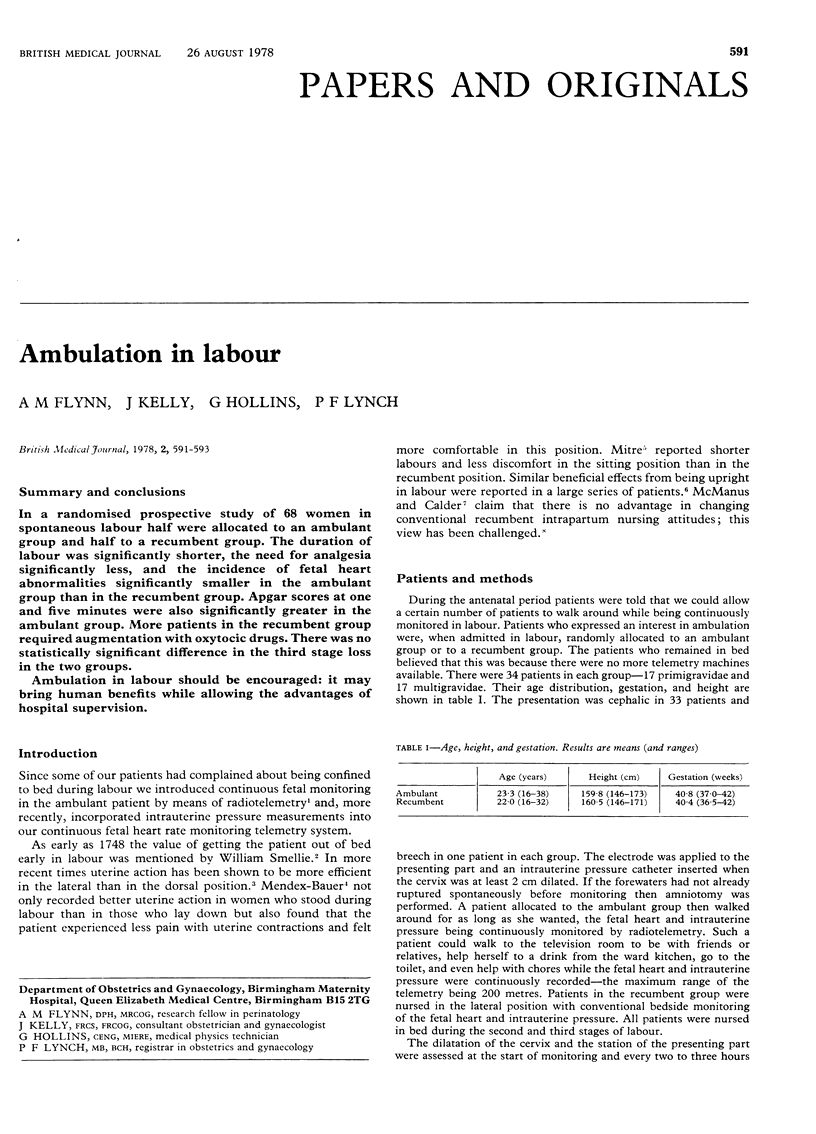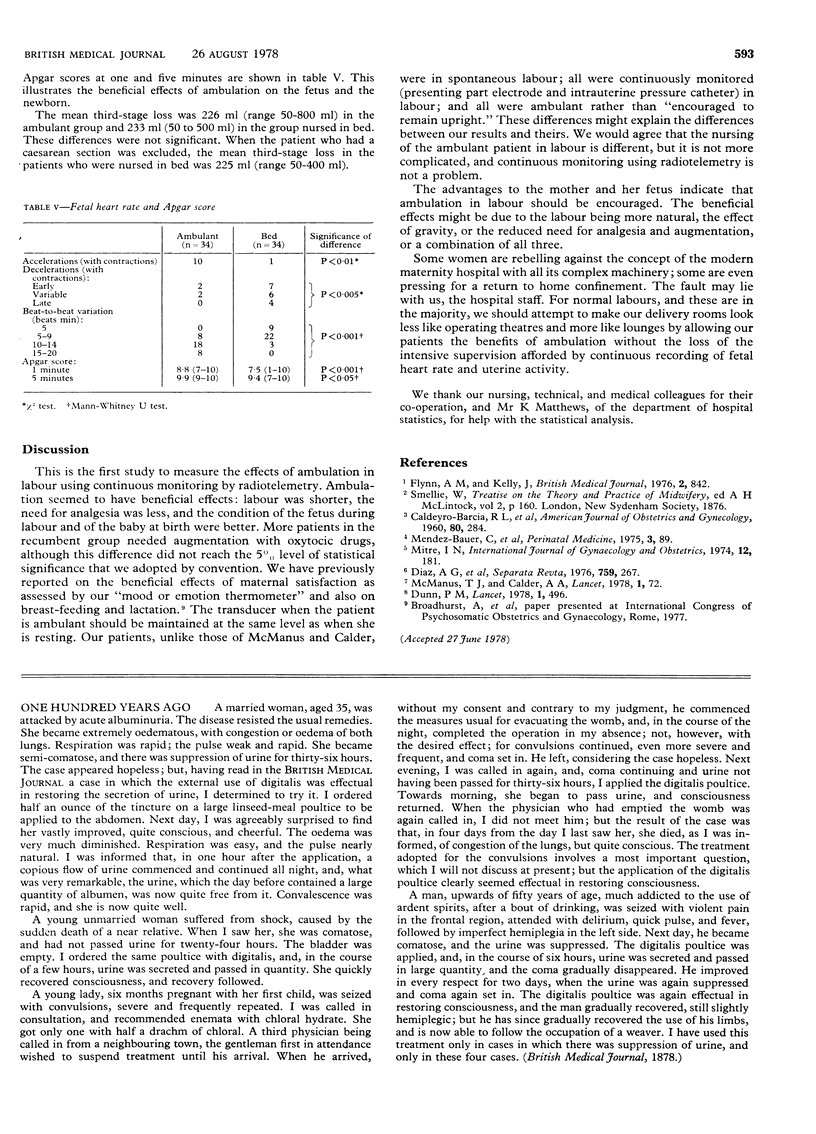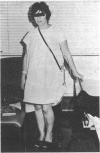Abstract
In a randomised prospective study of 68 women in spontaneous labour half were allocated to an ambulant group and half to a recumbent group. The duration of labour was significantly shorter, the need for analgesia significantly less, and the incidence of fetal heart abnormalities significantly smaller in the ambulant group than in the recumbent group. Apgar scores at one and five minutes were also significantly greater in the ambulant group. More patients in the recumbent group required augmentations with oxytocic drugs. There was no statistically significant difference in the third stage loss in the two groups. Ambulation in labour should be encouraged: it may bring human benefits while allowing the advantages of hospital supervision.
Full text
PDF


Images in this article
Selected References
These references are in PubMed. This may not be the complete list of references from this article.
- McManus T. J., Calder A. A. Upright posture and the efficiency of labour. Lancet. 1978 Jan 14;1(8055):72–74. doi: 10.1016/s0140-6736(78)90006-5. [DOI] [PubMed] [Google Scholar]
- Méndez-Bauer C., Arroyo J., García Ramos C., Menéndez A., Lavilla M., Izquierdo F., Villa Elízaga I., Zamarriego J. Effects of standing position on spontaneous uterine contractility and other aspects of labor. J Perinat Med. 1975;3(2):89–100. doi: 10.1515/jpme.1975.3.2.89. [DOI] [PubMed] [Google Scholar]
- Posture in labour. Lancet. 1978 Mar 4;1(8062):496–497. [PubMed] [Google Scholar]



